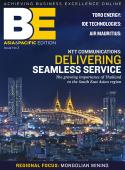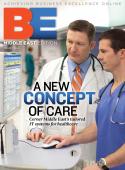The business of remembrance┬áWilbert Funeral Services, Inc. is the largest supplier of concrete vaults and memorials to funeral directors throughout North America. John OÔÇÖHanlon talks to vice president of manufacturing Denny Knigga about how he is bringing kaizen thinking to the most traditional of professions. The funeral industry deals in bereavement and loss; its image is a timeless one, and nobody would want that to be otherwise. A family or a community that has lost a valued member wants its obsequies done in a way that reflects the generations that have gone before. It isnÔÇÖt a time to experiment, generally speaking, or to introduce any practices that might be obtrusive or divert attention from the deceased.However, it is a major industry, estimated at $11 billion by the National Funeral Directors Association. Although it almost seems tasteless to mention it, funeral service is a business that should not suffer any downturn in the economy. ÔÇ£We may take a hit from the smaller amount of cash people have to spend, and also from any rise in raw material, transportation or energy costs, but people will continue to die at much the same rate as they did before,ÔÇØ admits Denny Knigga. ÔÇ£In some cases, people will turn to their 401(k) funds rather than compromise on the arrangements for someone they have loved, especially if that person has served their country, as have so many people now coming to the end of their lives.ÔÇØIn fact, the death rate is projected to rise from eight people per thousand now to nine people per thousand by 2020 and around 11 per thousand in 2040 as the baby boom reaches its inevitable conclusion. And people are as reluctant to economize on a funeral as they are on a wedding, so the funeral industry is likely to outperform the economy as a whole at this time.Wilbert Funeral Services, Inc., a subsidiary of Wilbert, Inc., was founded in 1893 in Chicago. It is the largest single-source supplier of concrete burial vaults and cremation-related products and services in the world, so it is uniquely well placed to take advantage of this growing demand. Its sister company, Wilbert Plastics, is based in Chicago and is a supplier to Wilbert Funeral Services as well as other injection molding customers. In addition to vaults, Wilbert supplies a wide range of ground burial and cremation options; it also produces personalized memorials, specialized solutions for children or the veterans of conflict since World War II, and ancillary products such as commemorative jewelry and prints. Unlike many of its competitors, Wilbert also provides full funeral services at the cemetery, such as chairs, tents, and the equipment used to lower caskets into grave sites.┬á Through its network of strategically located licensee operations, the company serves over 18,000 funeral homes, cemeteries and crematories in North America. In fact, every minute of every day of the year, a family chooses an outer burial container made by a Wilbert licensed manufacturer. Wilbert has become recognized for providing the death care products industry to the great of the nation, being associated with names such as Louis Armstrong, Elvis Presley and American Presidents Eisenhower, Kennedy and Nixon.Tradition is a virtue, but in the countryÔÇÖs premier supplier of vaults, cremation urns and memorials, it really has no place in the back office. Realizing this, the board of Wilbert, Inc. decided this year to bring its organization into the 21st century by appointing a new president, who has hired a new leadership team. As part of this process, Denny Knigga was brought in to effect change in the manufacturing processes of the company and to introduce the concept of lean manufacturing.Knigga is a car industry veteran from General Motors who has experience in the funeral industry as well. When he took charge at the Broadview, Illinois, factory of Wilbert Funeral Services, he found that its 60 employees had little concept of modern manufacturing practices. ÔÇ£ItÔÇÖs fair to say that there was plenty of room for improvement, and we were able to make a number of early gains. WeÔÇÖve already started a program of addressing the seven forms of waste and removing them from the process; now weÔÇÖre looking at the potential for introducing just-in-time delivery.ÔÇØ Of course, JIT would cut down or eliminate inventory on the production line. The seven wastes identified by Shigeo Shingo were: overproduction, inventory, motion, waiting, transportation, overprocessing and defects. One major action was to close a remote facility at Little Hocking, Ohio, and relocate it to Broadview. At the same time, they created an area in the Broadview facility where training could take place, not only for Wilbert employees but also for the companyÔÇÖs 190 licensees. ÔÇ£We can improve our own operations, but if the rest of the supply chain remains the same as it was, then the benefit will be lost,ÔÇØ says Knigga. So far one licensee has been through the Wilbert continuous improvement training workshop, but he hopes that this will be a benchmark case study for the others and encourage them to strive for the cost savings and enhanced customer service that go with operational improvement.For the Wilbert employees, Knigga teamed up with the Chicago Manufacturing Center to provide an introductory course to lean manufacturing. ÔÇ£They had gotten used to being just ÔÇÿoilersÔÇÖÔÇöminding the machines but not thinking about how the processes could be changed or improved. The course made them participate in lean simulations; they learned to use half the manufacturing space and half the investment in tools to produce new products in half the time and with fewer defects.ÔÇØItÔÇÖs a little early, after only four months, to be able to analyze the effect of the changes implemented so far, and Knigga does not want to project how much will be saved in the first year. However, among his goals are moving toward small batch productionÔÇöa change that makes a lot of sense given the high degree of customization required by this marketÔÇöorder-driven production, 5S, kaizen and the upgrading of the companyÔÇÖs current ERP systems. The end users of the service should never notice the changes, though fewer of them will be disappointed by quality issues or late deliveries. And at a difficult time, thatÔÇÖs the last thing they would want.┬á









